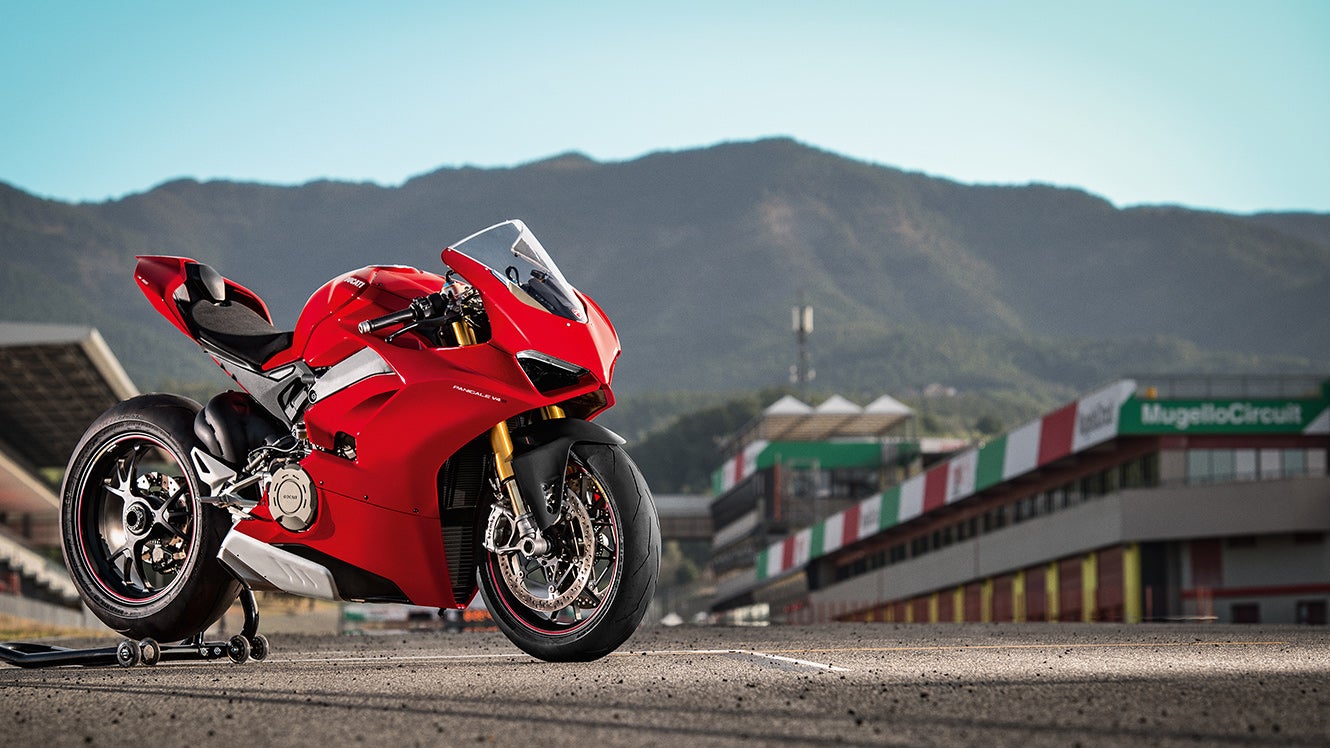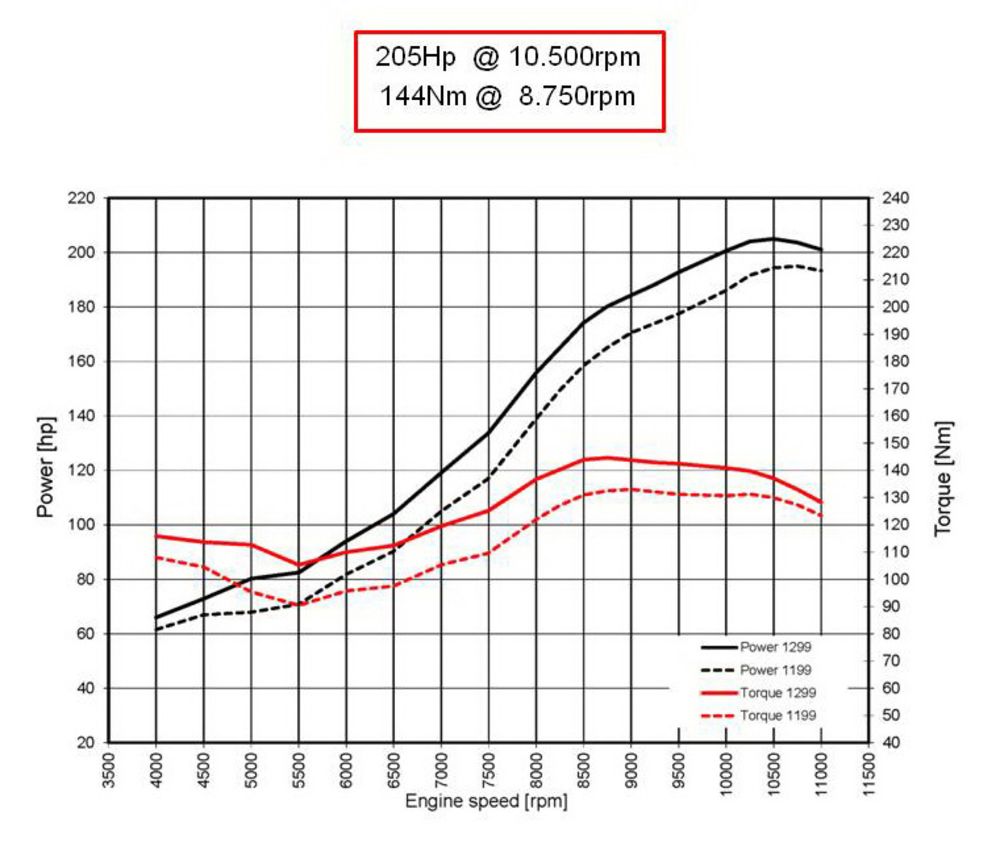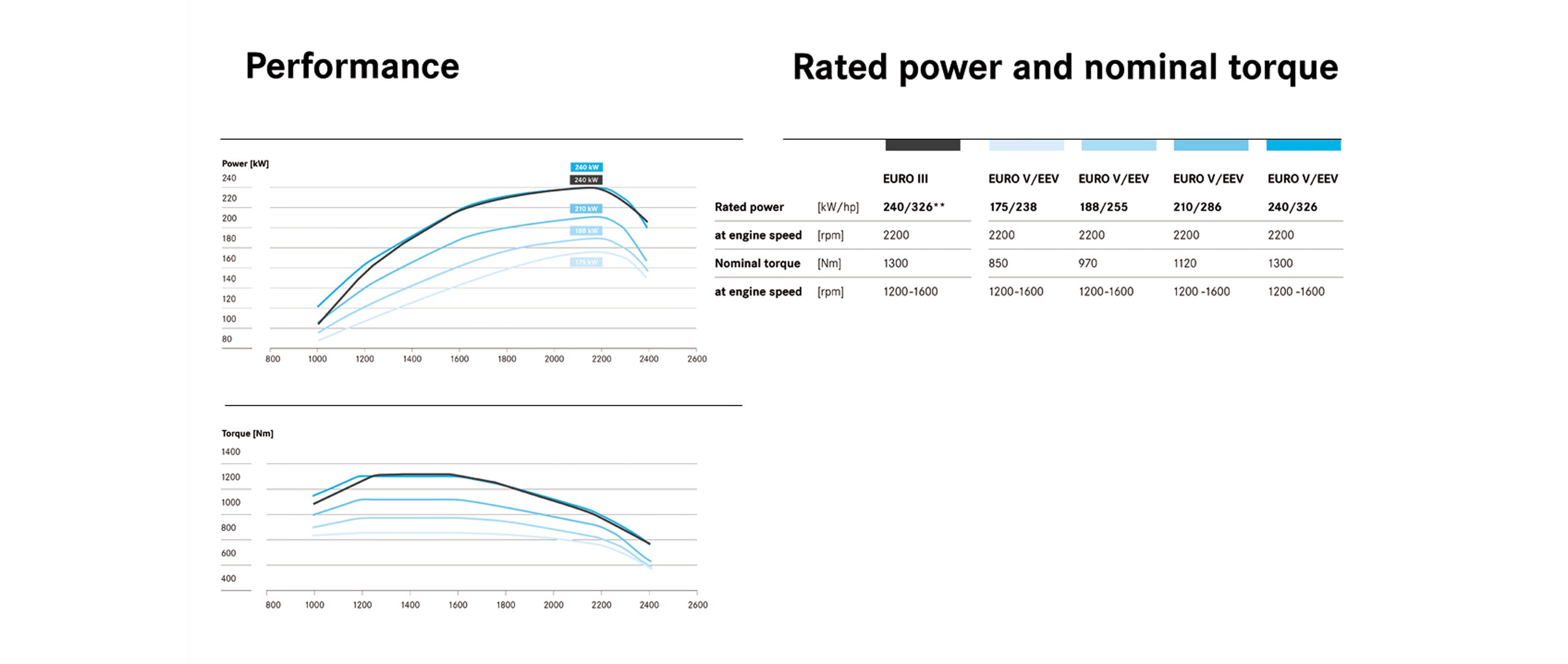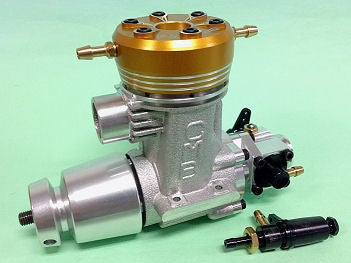 "Spanfeller is a twat" (theaspiringengineer)
"Spanfeller is a twat" (theaspiringengineer)
10/06/2018 at 19:43 ē Filed to: None
 0
0
 29
29
 "Spanfeller is a twat" (theaspiringengineer)
"Spanfeller is a twat" (theaspiringengineer)
10/06/2018 at 19:43 ē Filed to: None |  0 0
|  29 29 |
Iím writing an article for my schoolís radio website about engines , and I need some advice on physics.

My article is about torque , and it explains why people need to be critical when reading about a vehicleís performance figures. My big argument is ďTorque is how much force you can apply, not how often you can apply itĒ
In essence, I say that while power does depend on torque, engines gather power using their torque in different ways. Having a lot of torque doesnít mean your car is faster. I give as an example a motorcycle and a bus.
A motorcycle (Say, a Ducati Paginale) might have a lot of power but very little torque. The engine is very small but it rotates very quickly. Since power is torque*RPM; we can deduct that the engine produces very little torque, but the high revs the engine can work at means it generates a lot of power. The Panigale V4 generates less than 100 lb-ft of torque, but it generates 214hp, at 13,000RPM.
A Mercedes Benz Citaro makes 282HP but it makes 826 lb-ft of torque, a great discrepancy! But the engine is made to work like this; the Mercedes has a very large engine that can generate a lot of torque, but it spins a lot slower than the ducati because the components need to be beefier because of the extra torque.
The key difference here is what the engines are supposed to be in ; the Citaro is a city bus, so it doesnít need to accelerate quickly or go at a high speed. It does need to displace a lot of mass; so it needs a lot of torque, since this mass is not being displaced at a high speed, it doesnít need a lot of power.
The ducati on the other hand does need to move and accelerate very quickly, but it has a small mass; torque is not as important in this application.
Obviously, F=M*A but, if my understanding is correct ( I could be wrong) , this only describes the initial acceleration from a standstill (static?) once the car is in motion, the power sent to the wheels is the number that matters most in both acceleration and speed.
I will be asking a professor about it. But Iíd like to avoid making a mistake,
 MM54
> Spanfeller is a twat
MM54
> Spanfeller is a twat
10/06/2018 at 20:21 |
|
Power is the rate at which you can do work; work is a function of force and displacement. Torque is a measure of force; HP is a measure of power. It takes a lot more force to get a bus moving than it does
a motorcycle.
 Spanfeller is a twat
> MM54
Spanfeller is a twat
> MM54
10/06/2018 at 20:29 |
|
Exactly!
But like, if the D ucati outputted twice or three times more torque and the same amount of power, it wouldnít be quicker?†
 MM54
> Spanfeller is a twat
MM54
> Spanfeller is a twat
10/06/2018 at 20:34 |
|
Yes but to have an engine which would produce that torque would be bigger (and heavier) and not rev as fast or high. The light weight high-revving engine is preferred for a bike. In the bus, you could make it rev higher and make less torque but it would use more fuel
, wear quicker, and be generally obnoxious.
 Spanfeller is a twat
> MM54
Spanfeller is a twat
> MM54
10/06/2018 at 20:35 |
|
Thanks! Iíll add more context about why engines are designed like that, but in essence the argument isnít wrong?†
 jimz
> Spanfeller is a twat
jimz
> Spanfeller is a twat
10/06/2018 at 20:51 |
|
the best way to look at it is this:
power is power. Power defines how much work you can do. a 12 liter, 400 hp Cummins diesel and a 5.0 liter, 400 hp Mustang V8 can do the same amount of work.
the difference is in how and where they do that work. That 12 liter Cummins will be making 400 hp at like 1800 rpm, while the Mustangís 5.0 liter will be making it at 6500 RPM.
an engineís horsepower rating tells you how much work it can do. its torque curve tells you how you need to gear it to do that work. the 400 hp Cummins can move a ton of weight from a stop (because it has 1400 lb-ft of torque) and get up to 70 mph while moving it, but since it redlines at 2200 rpm it will need 9, 10, 13 transmission gears to do so. the 400 hp Mustang can accelerate from 0-60 in 3.9 seconds with a 6 speed transmission. but because it only has 390 lb-ft of peak torque, it would need incredibly low gearing just to get heavy loads moving. But it could do it, if you had a 30-speed transmission with over half of them being underdriven.
then thereís longevity; one key thing limiting the speed of reciprocating engines is peak piston speed.† A 12 liter Cummins will be barely loping along over idle, while a 5.0 liter Coyote would be screaming its damn head off.†
 Spanfeller is a twat
> jimz
Spanfeller is a twat
> jimz
10/06/2018 at 20:59 |
|
Thanks! I think that giving real world examples really makes things easier for my target audience.
I f you had an engine with, say, 30hp, and 40,000 lb-ft of torque , it doesnít do a lot of work (small HP number) but it can displace a lot of mass (high torque number). If I understand correctly (lets assume gearing is 1:1 for simplicity) this engine wouldnít be very quick, as in, it can displace a lot of mass, just not very fast?
If the roles were inverted, 40k HP an 30lb-ft of torque, it would displace a very small amount of mass, but it could be able to displace it very quickly?
Also, engine longevity plays an important role. I bet Cummins would like a slow engine that makes a lot of torque because piston speed is lower, but it means it has to be very large in order to produce a similar horsepower to a Coyote. Yet the Coyote produces a lot less torque (as you say, a Coyote would be significantly disadvantaged in towing and would need different gearing)†
 kanadanmajava1
> Spanfeller is a twat
kanadanmajava1
> Spanfeller is a twat
10/06/2018 at 21:02 |
|
Here † you can can find quite decent set of internal combustion engines basics. Basically torque comes from the displacement and possible boost pressure. In naturally aspirated form engines with similar displacement will produce quite similar maximum torque as maximum torque is usually achieve in quite low engine speed. With low speeds the ďrefinement levelĒ of the engine doesnít matter so much.
Of course if an engine is optimized to run very high speeds and it doesnít have any camshaft timing adjustment methods, the gas exchange might not not work very well while running at low speeds. Brake mean effective pressure is a value that can be used to estimate a torque with similar engines with different displacement. It can also be used to check if torque of an engine is realistic or not.
Getting a lot of power at high speed isnít a very good for engine life time expectancy . If you need to use maximum power for long times the engine has to designed very differently. A C itaro engine can be used at full power for hours. A Ducati engine wouldnít live for very long at full power. As Citaro mak es most of its power with boost pressure instead of high engine speed, the usable power band is very wide. But with a Ducati engine the power comes at very high speeds and its pretty much completely powerless at the speeds that Citaro engine could do (these donít go much over 2000 rpm).
I donít think that torque is very useful value for comparing engines. You can calculate power from torque and engine speed. Itís power that tells you if things can accelerate fast or not. But can you use the power? Itís a lot more useful to see power or torque graphs as a function of engine speed. If you have some transmission that letís you stay near the maximum power area, you can accelerate fast .
1199/ 129 9 Panigale:

Random M-B engines:

 MM54
> Spanfeller is a twat
MM54
> Spanfeller is a twat
10/06/2018 at 21:04 |
|
Itís a fair point, yes.
 atfsgeoff
> Spanfeller is a twat
atfsgeoff
> Spanfeller is a twat
10/06/2018 at 21:06 |
|
Gearing effectively multiplies torque but divides speed. If the Ducati makes 200hp at 12,000rpm, that means it is putting out roughly the same power as the Citaro does at, letís say, 1500rpm. Now, to get the same wheel speed, you would need a gear reduction of 8:1 on the Ducatiís engine where the Citaro can be 1:1 direct drive. This means the Ducatiís engine is also putting out 8 times as much torque to the wheel as it is at the crank. If thatís 90 ft lbs, thatís multiplied to 540 ft lbs.
The Ducati engine will not live long at 13,000rpm. The Citaroís big diesel engine will happily plug along at 1500rpm for years.
 Spanfeller is a twat
> kanadanmajava1
Spanfeller is a twat
> kanadanmajava1
10/06/2018 at 21:06 |
|
Thanks! I do add an engine graph in the article in order to make it clearer to the reader, but I forgot to add that the Ducati engine uses peak power for a few minutes for every hour it runs, where a Citaro might use peak power for 30 or 40mins for every hour it runs. As its slower it probably will last longer than the ducatiís engine.
Iíll be sure to use that link in order to make the article more credible and precise!
 Spanfeller is a twat
> MM54
Spanfeller is a twat
> MM54
10/06/2018 at 21:08 |
|

 jimz
> Spanfeller is a twat
jimz
> Spanfeller is a twat
10/06/2018 at 21:10 |
|
If you had an engine with, say, 30hp, and 40,000 lb-ft of torque , it doesnít do a lot of work (small HP number) but it can displace a lot of mass (high torque number). If I understand correctly (lets assume gearing is 1:1 for simplicity) this engine wouldnít be very quick, as in, it can displace a lot of mass, just not very fast?
more or less, it could get a load moving, but only move at a crawl. a good example of this would be the Space Shuttle Crawler/Transporter. It could move the assembled, erected Space Shuttle from the vehicle assembly building, but it could only do so at 1 mile per hour.
If the roles were inverted, 40k HP an 30lb-ft of torque, it would displace a very small amount of mass, but it could be able to displace it very quickly?
yes, but in the real world such an engine wouldnít be able to even get itself moving. it would have so little mass that any attempt at moving itself (or a vehicle itís installed in) would stall it.
not to mention how impractial such things would be.† I have some very high power dense engines (radio control nitro engines) and even though they make rated power at 28-30,000 rpm they donít have such a huge imbalance between hp/torque.†
 Spanfeller is a twat
> atfsgeoff
Spanfeller is a twat
> atfsgeoff
10/06/2018 at 21:10 |
|
Thanks!
I do have to add a disclaimer to the article about gearing since it does have a critical effect and I donít delve too much into it as is . But yeah, the consensus is that the Citaro will probably need less maintenance as it can run slower (lower peak piston speed)
 Spanfeller is a twat
> jimz
Spanfeller is a twat
> jimz
10/06/2018 at 21:13 |
|
I think that putting extreme examples (granted, real life ones) could help readers understand. I think Iíll keep the Ducati/Citaro comparison , but to really drive the point home, I could add the SS Crawler.
Thanks for the help!
 atfsgeoff
> atfsgeoff
atfsgeoff
> atfsgeoff
10/06/2018 at 21:21 |
|
Sorry I fudged the numbers there a bit, was operating off multiplying by 6 before correcting the Citaroís engine RPM down from 2000 to 1500 (2000 is redline)
. The Duc engine torque multiplied by 8 would be 720 ft lbs, not 540.
 sdwarf36
> Spanfeller is a twat
sdwarf36
> Spanfeller is a twat
10/06/2018 at 23:06 |
|
Well-you can go with the old stock car saying: Horsepower is how fast you hit the wall---torque is how far you take the wall with you.....
 jimz
> sdwarf36
jimz
> sdwarf36
10/06/2018 at 23:29 |
|
that saying is nonsense.
 DucST3-Red-1Liter-Standing-By
> Spanfeller is a twat
DucST3-Red-1Liter-Standing-By
> Spanfeller is a twat
10/07/2018 at 00:31 |
|
You might pick a 4 cylinder bike, even more extreme ratio of hp to torque!†
 Spanfeller is a twat
> DucST3-Red-1Liter-Standing-By
Spanfeller is a twat
> DucST3-Red-1Liter-Standing-By
10/07/2018 at 00:41 |
|
I think the biggest difference is in the sub-litre range... maybe something like a 600. no torque, but a lot of power
 DucST3-Red-1Liter-Standing-By
> Spanfeller is a twat
DucST3-Red-1Liter-Standing-By
> Spanfeller is a twat
10/07/2018 at 00:46 |
|
Yep! Like an r6, I think that's the highest revving of the super sports†
 Spanfeller is a twat
> DucST3-Red-1Liter-Standing-By
Spanfeller is a twat
> DucST3-Red-1Liter-Standing-By
10/07/2018 at 01:55 |
|
Itís always †an R6!
 tromoly
> Spanfeller is a twat
tromoly
> Spanfeller is a twat
10/07/2018 at 02:14 |
|
Obviously, F=M*A but, if my understanding is correct (I could be wrong),
this only describes the initial acceleration from a standstill
(static?) once the car is in motion, the power sent to the wheels is the
number that matters most in both acceleration and speed.
Power at the wheels doesnít matter. Torque at the wheels matters, divide your wheel torque by wheel radius and you get the engine force available to accelerate the vehicle. Subtract out your losses (wind drag, tire rolling resistance, driveline losses) and you get a resultant force that when plugged into F=M*A tells you what the vehicle will do.
 BahamaTodd
> MM54
BahamaTodd
> MM54
10/07/2018 at 10:40 |
|
No, it takes more power to get the bus moving. Torque (or force) means nothing if not referenced with RPM. Due to limitations in gearing, † the large amount of power to get bus moving needs to be available at low RPM which therefore requires a large amount of torque at low RPM .
 BahamaTodd
> Spanfeller is a twat
BahamaTodd
> Spanfeller is a twat
10/07/2018 at 10:50 |
|
Keep in mind that power ratings are the peak power rating. An engine that makes more torque with the same peak power will make more power lower in the rev range. So yes it would be quicker because it will have more power overall.
 jimz
> Spanfeller is a twat
jimz
> Spanfeller is a twat
10/07/2018 at 12:03 |
|
sure, they can help.† like the usual 101-level ďassume a spherical cow on a frictionless plane in a perfect vacuumĒ problems :)
 jimz
> Spanfeller is a twat
jimz
> Spanfeller is a twat
10/07/2018 at 12:10 |
|
the most extreme ratio Iíve personally encountered in an engine actually used to move something are the nitro R/C glow engines. The marine ones (thanks to water cooling) can run up to 65% nitromethane, and as such a 7.5cc engine can peak at 4.5 hp at 29,000 rpm. Which means peak torque is 0.82 lb-ft.

 Spanfeller is a twat
> sdwarf36
Spanfeller is a twat
> sdwarf36
10/07/2018 at 14:18 |
|
Its actually what Iím trying to avoid.
Force is M*A, when you hit a wall you go from Vmax to-0 in a very small amount of time (huge acceleration), the rest of the equation would be the carís mass.
But torque is how much mass you can displace, just not how quickly (or so is my understanding from my physics course and all the feedback Iíve gotten)†
 You can tell a Finn but you can't tell him much
> Spanfeller is a twat
You can tell a Finn but you can't tell him much
> Spanfeller is a twat
10/08/2018 at 12:04 |
|
Engineering Explained did a good video showing how a high rpm, low torque motor compares to a low rpm, high torque motor making roughly the same horsepower.
 MultiplaOrgasms
> atfsgeoff
MultiplaOrgasms
> atfsgeoff
10/08/2018 at 18:35 |
|
The Citaroís big diesel engine will happily plug along at 1500rpm for years.
Being in a City Bus the engine will almost never be at a steady 1500rpm, rather it will accelerate and decelerate an extraordinarily high number of times, but under relatively light load (humans are †light ).